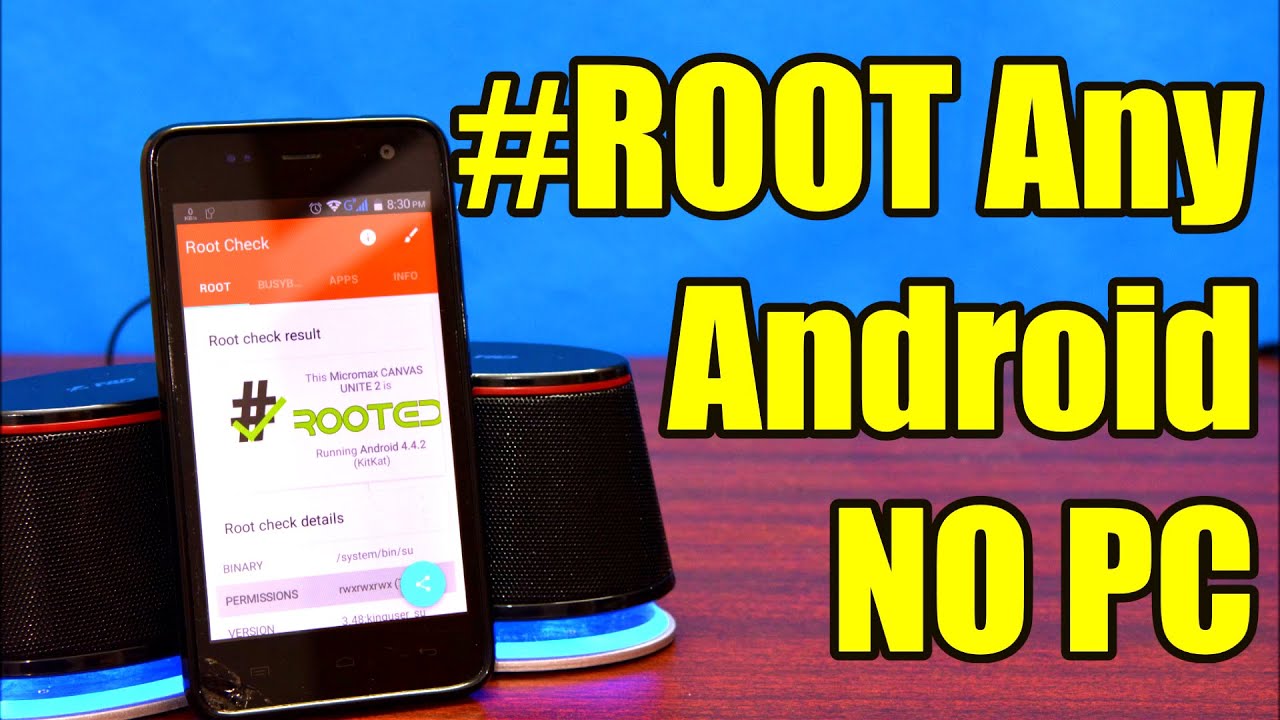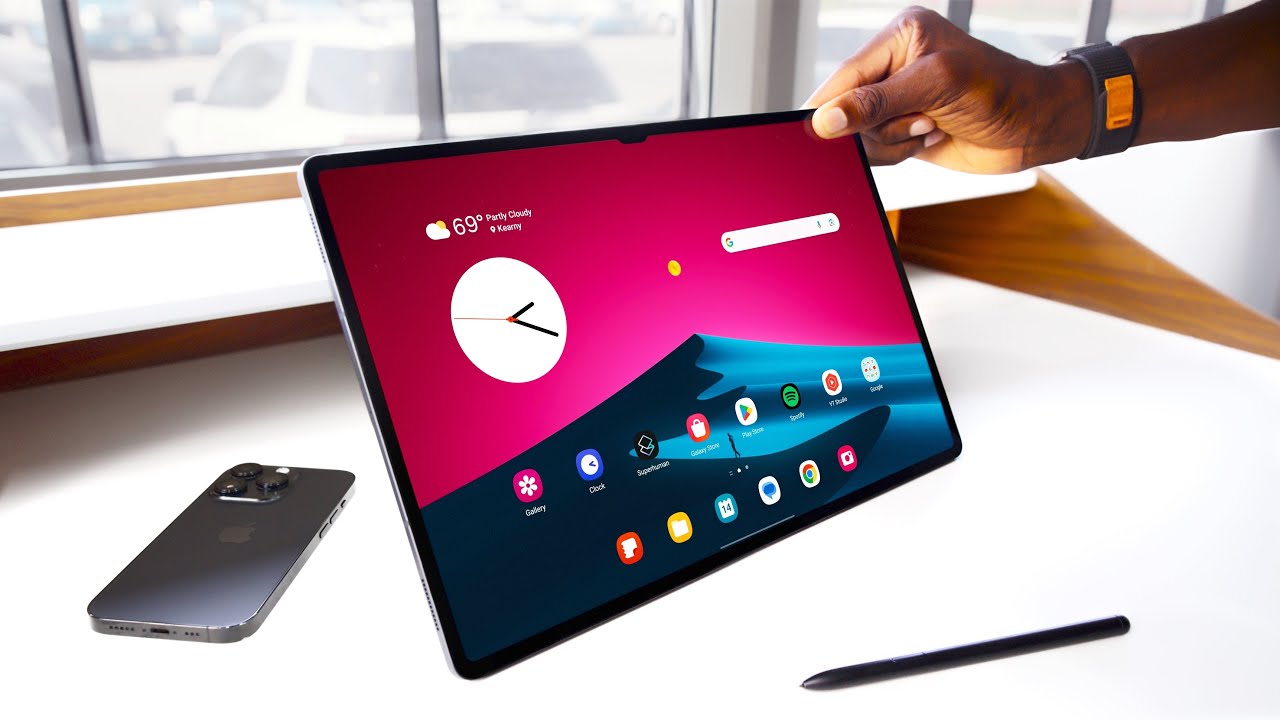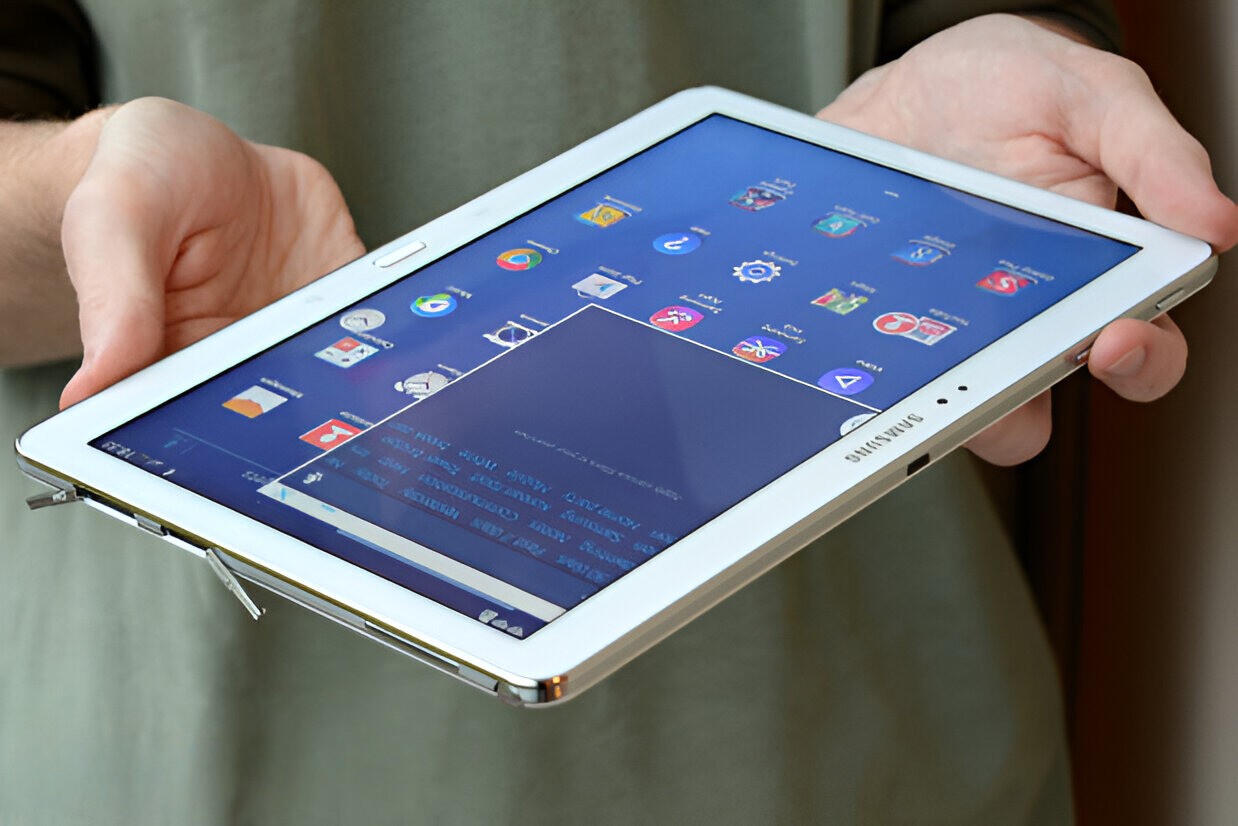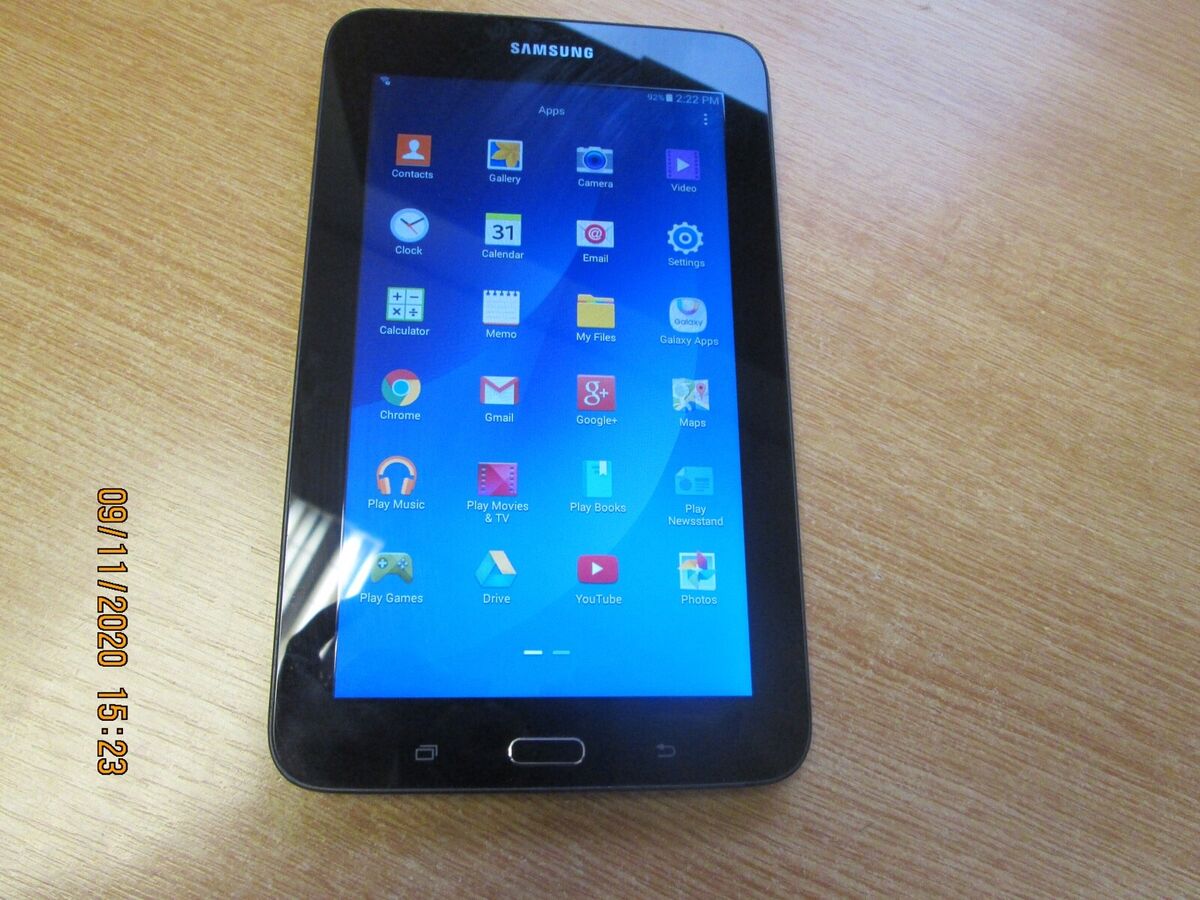Introduction
Rooting your tablet can be a tempting option for tech-savvy individuals who want to unlock the full potential of their devices. By gaining root access, you can have complete control over your tablet’s operating system and make customizations that are not otherwise possible.
Rooting essentially allows you to access administrative privileges on your tablet, giving you the freedom to install custom ROMs, remove bloatware, and tweak system settings to optimize performance. However, it is important to weigh the benefits against the risks before proceeding with the rooting process.
In this article, we will explore the benefits and risks associated with rooting your tablet, demystify the concept of root access, provide step-by-step guidance on how to root your tablet, suggest some popular apps that are specifically designed for rooted devices, address common problems that may arise during the process, and answer frequently asked questions.
While rooting can offer exciting possibilities, it’s important to note that the process may void your warranty and may have unintended consequences if done incorrectly. It’s crucial to understand the implications and risks involved before making the decision to root your tablet.
Whether you are looking to enhance your tablet’s performance, personalize its appearance, or explore advanced customization options, this article will serve as a comprehensive guide to help you make an informed decision about whether rooting your tablet is the right choice for you.
Benefits of Rooting Your Tablet
Rooting your tablet opens up a world of possibilities and offers several advantages that can greatly enhance your device’s functionality and user experience.
1. Customization: Rooting allows you to customize your tablet to suit your preferences. You can install custom ROMs that offer a range of features and themes, giving your device a unique look and feel.
2. Performance Optimization: Root access enables you to remove bloatware and unnecessary pre-installed apps that can slow down your tablet. You can also tweak system settings and improve performance by overclocking the CPU or optimizing memory usage.
3. Advanced App Management: Rooting your tablet gives you enhanced control over app management. You can backup, uninstall, or freeze apps that are otherwise unremovable, creating more storage space and improving overall performance.
4. Ad Blocking: Root access allows you to utilize ad-blocking apps, which can significantly enhance your browsing experience by eliminating intrusive ads across various apps and websites.
5. Wi-Fi and Tethering Tweaks: Rooting enables you to modify Wi-Fi settings and unlock tethering features. You can bypass carrier restrictions and share your tablet’s internet connection with other devices without limitations.
6. Greater System Access: By rooting your tablet, you gain full administrative privileges, granting you access to system files and directories. This means you can customize the boot animation, modify system fonts, and apply other system-level tweaks.
7. Improved Battery Life: Rooting enables you to install battery management apps that can optimize power consumption and extend battery life by controlling CPU usage and app behavior.
8. Enhanced Backup and Recovery Options: With root access, you have access to advanced backup and recovery tools. This allows you to create full system backups, restore your tablet to a previous state, or even switch between different ROMs easily.
9. Access to Exclusive Apps: Some apps are designed exclusively for rooted devices, offering features and functionalities that are otherwise inaccessible. These apps can enhance your tablet experience and allow you to accomplish tasks that are not possible on unrooted devices.
10. Stay Up-to-Date: Rooting your tablet can give you access to the latest Android updates and versions, even if your device’s manufacturer has stopped providing official updates. Custom ROMs often provide the latest features and security patches, ensuring your tablet is always up-to-date.
Overall, rooting your tablet unlocks a world of customization and optimization options, allowing you to tailor your device to your exact needs and preferences. However, it’s important to keep in mind the potential risks and consequences associated with rooting, which will be discussed further in the following section.
Risks of Rooting Your Tablet
While rooting your tablet offers numerous benefits, it’s essential to also consider the potential risks involved before proceeding with the process.
1. Voided Warranty: Rooting your tablet typically voids the manufacturer’s warranty. This means that if you encounter any hardware or software issues after rooting, you may no longer be able to seek support or have your device repaired for free.
2. Security Vulnerabilities: Rooting your tablet exposes it to potential security risks. By gaining root access, malicious apps or hackers can gain deeper access to your device’s system files, leading to potential data breaches or unauthorized access to sensitive information.
3. Bricking Your Device: There is a risk of “bricking” your tablet during the rooting process, which essentially renders it unusable. If the rooting process is not done correctly or if incompatible software is used, it can result in irreversible damage to your device’s software or hardware.
4. Malware and Untrusted Apps: Rooting your tablet often involves installing apps from unofficial sources. This increases the risk of downloading malware or malicious apps that can compromise the security and stability of your device.
5. Incompatibility with Software Updates: After rooting your tablet, you may face compatibility issues with future software updates. Manufacturers often release updates specifically designed for non-rooted devices, and installing these updates on a rooted device can cause system instability or even result in a loss of root access.
6. Reduced Stability and Performance: Rooting your tablet gives you the ability to modify system files and settings, but it also introduces the potential for instability. Improperly configuring or tweaking settings can lead to performance issues, frequent crashes, or even system-wide malfunctions.
7. Difficulties with Banking and DRM Apps: Rooting may cause compatibility issues with certain banking apps or apps that rely on Digital Rights Management (DRM) systems. These apps often detect root access and may refuse to work properly or even refuse to run altogether.
8. Loss of OTA Updates: With a rooted device, you may lose the ability to receive Over-The-Air (OTA) updates directly from the manufacturer. This means you’ll need to manually search for and install updates, which can be time-consuming and may require flashing custom ROMs.
It’s crucial to weigh the risks of rooting against the benefits it provides. Only proceed if you are comfortable with accepting the potential consequences and have a sufficient understanding of the rooting process.
Understanding Root Access
To grasp the concept of rooting your tablet, it’s important to understand what root access actually means and why it’s significant.
Root access, also known as superuser access or administrative access, is the highest level of privilege on an Android device. It allows you to have complete control over the operating system and make changes that are otherwise restricted for regular users.
By default, most Android devices are set up with limited user privileges, which restrict the ability to modify system files or settings that could potentially cause damage or instability. Root access unlocks these restrictions, giving you the freedom to make system-level changes and optimizations.
Root access provides the ability to install and run apps that require elevated permissions and access features that aren’t available to unrooted devices. It allows you to customize and fine-tune your device according to your preferences, enabling you to unlock the full potential of your tablet.
However, it’s important to exercise caution when utilizing root access. With great power comes great responsibility, and the improper use of root access can result in system instabilities or other issues.
Root access should only be granted to trusted apps and not given indiscriminately. This is because granting root access to a malicious app could put your device and personal information at risk. It is recommended to carefully review the permissions and reputation of apps before granting them root access.
Moreover, it’s crucial to understand that rooting your tablet may void the manufacturer’s warranty, as it involves modifying the original software and settings of the device. It’s essential to research the warranty terms and conditions specific to your device before proceeding with rooting.
Lastly, gaining root access requires a specific process that varies depending on the make and model of your tablet. It typically involves using specialized software and following step-by-step instructions. It’s vital to follow reliable and up-to-date rooting guides to ensure a successful and safe rooting process.
By comprehending the concept of root access and the responsibilities that come with it, you can make an informed decision about whether or not to pursue rooting your tablet.
Steps to Root Your Tablet
If you have decided to root your tablet, it’s important to follow the correct steps to ensure a smooth and successful process. The specific steps may vary depending on your tablet model and Android version, so be sure to consult reliable sources and guides that are specific to your device. Here is a general outline of the steps involved:
1. Backup Your Data: Before starting the rooting process, it’s crucial to backup all your important data. This includes contacts, photos, videos, and any other files that you don’t want to lose in case something goes wrong during rooting.
2. Enable USB Debugging: To connect your tablet to a computer and facilitate the rooting process, you will need to enable USB debugging mode. This option is typically found in the Developer Options menu within the Settings of your tablet. If you don’t see the Developer Options, go to the About section of your tablet and tap on the Build Number multiple times to unlock it.
3. Install the Necessary Drivers: If your tablet requires specific drivers to connect to a computer, make sure to install them before proceeding. These drivers allow your computer to recognize and communicate with your tablet during the rooting process.
4. Choose a Rooting Method: There are several rooting methods available, including using software like KingoRoot, Magisk, or flashing a custom recovery like TWRP. Research the best method for your tablet model and Android version, and ensure that the method you choose is safe and reliable.
5. Download the Required Files: Depending on your chosen rooting method, you may need to download specific files or software onto your computer. Follow the instructions provided by the rooting method you have chosen to download the necessary files.
6. Connect Your Tablet to the Computer: Using a USB cable, connect your tablet to the computer and ensure that your tablet is recognized by the computer. It should show up as a connected device in your computer’s device manager or file explorer.
7. Run the Rooting Software: Launch the rooting software on your computer and follow the on-screen instructions. Some rooting methods involve a simple one-click process, while others require you to manually enter commands to initiate the rooting process.
8. Wait for the Rooting Process to Complete: Once the rooting process is initiated, it may take some time for it to complete. It’s important to be patient and avoid disconnecting your tablet or interrupting the process until it is finished.
9. Verify Root Access: After the rooting process is complete, you can verify if your tablet has successfully gained root access. You can do this by downloading and running root-checking apps from the Google Play Store, such as Root Checker, which will confirm if root access has been granted.
10. Take Precautions and Enjoy: With root access on your tablet, you now have the freedom to explore advanced customization and optimization options. However, always exercise caution when making system-level changes and be aware of the risks associated with root access.
It’s important to note that rooting your tablet may void your warranty and carry risks if not done correctly. It’s recommended to thoroughly research and follow reliable rooting guides specific to your tablet model and Android version to ensure a successful and safe rooting process.
Recommended Apps for Rooted Tablets
Once you have successfully rooted your tablet, you gain access to a whole new world of apps that are specifically designed to take advantage of root access. These apps can further enhance your tablet experience and provide additional customization and functionality options. Here are some recommended apps for rooted tablets:
1. Titanium Backup: This powerful backup and restore app allows you to create comprehensive backups of your apps, data, and system files. You can also freeze or uninstall pre-installed apps, ensuring a clutter-free and optimized tablet experience.
2. Greenify: Greenify helps improve battery life by efficiently managing app hibernation. It allows you to put resource-hungry apps into a deep sleep mode, preventing them from running in the background and consuming battery power when not in use.
3. AdAway: Say goodbye to annoying ads with AdAway. It is an ad-blocking app that can help you eliminate ads from apps, games, and websites, providing an uninterrupted browsing experience.
4. Xposed Framework: Xposed Framework is a powerful tool that enables you to customize and modify various aspects of your tablet’s user interface and system behavior. It offers a wide range of modules that can be installed to tweak everything from the status bar to app functionality.
5. Tasker: Tasker allows you to automate tasks and actions on your tablet based on specific triggers or conditions. With root access, Tasker gains even more capabilities, allowing you to have deeper control over your tablet’s settings and behavior.
6. Magisk Manager: Magisk Manager is a popular tool for managing root access on your device. It not only grants root access but also allows you to hide root from certain apps that may not work with rooted devices. It’s a must-have app for managing root permissions effectively.
7. Viper4Android: If you are an audiophile, Viper4Android is a highly recommended app for rooted tablets. It provides advanced audio customization options, allowing you to enhance the sound quality and tailor it to your preferences.
8. Root Explorer: Root Explorer is a powerful file manager that provides access to the root directory of your tablet. It allows you to navigate, modify, and manage system files, making it easier to customize your tablet’s appearance and functionality.
9. CPU Control: With root access, you can use CPU Control apps to underclock or overclock your tablet’s CPU, helping you optimize performance and battery life according to your specific needs.
10. Dumpster: Dumpster is a file recovery app that functions as a recycle bin for your tablet. It can restore deleted files, including photos, videos, documents, and more, providing an added layer of assurance against accidental data loss.
Remember to exercise caution when using root-enabled apps and make sure to review and understand the permissions required by each app. Additionally, regularly update your apps and use reliable sources when downloading and installing root-enabled apps to ensure a secure and stable tablet experience.
Common Problems and Solutions
While rooting your tablet can unlock a range of benefits and customization options, it’s not uncommon to encounter some challenges along the way. Here are some common problems that users may face during the rooting process, along with their possible solutions:
1. Device Not Recognized: If your computer fails to recognize your tablet when connecting it via USB, ensure that you have installed the necessary drivers for your tablet model. You may also try using a different USB cable or port, as connectivity issues can sometimes arise due to faulty cables or ports.
2. Stuck in Bootloop: A bootloop occurs when your tablet gets stuck in a continuous reboot cycle. This can happen if the rooting process was not performed correctly or if incompatible software was used. In such cases, try booting into recovery mode and perform a factory reset to resolve the issue.
3. Wi-Fi or Bluetooth Issues: Rooting your tablet can sometimes cause Wi-Fi or Bluetooth connectivity issues. To fix this, try resetting your network settings or flashing a stock firmware ROM specific to your tablet model. Alternatively, search for specific solutions related to your tablet model and Android version.
4. App Compatibility Issues: Some apps may not work properly on rooted tablets, especially those that rely on specific security features or root detection. To overcome this, you can try using root-hiding apps or modules, such as Magisk Hide, to hide root access from these apps.
5. Loss of Data: It’s essential to back up your data before rooting your tablet. However, if you forget to back up or experience data loss during the process, data recovery tools like DiskDigger or PhotoRec may help retrieve lost files. Keep in mind that the success of data recovery depends on the extent of the data loss and the condition of the device.
6. System Instability: Rooting your tablet can sometimes lead to system instability or app crashes. This could occur due to incompatible root-only apps, conflicting settings, or incompatible custom ROMs. In such cases, try uninstalling recently installed root apps or revert to a previous working ROM version.
7. Loss of OTA Updates: After rooting your tablet, you may lose the ability to receive official Over-The-Air (OTA) updates. To address this, consider flashing custom ROMs that are regularly updated by the development community. These ROMs often provide the latest Android versions and security updates.
8. Security Risks: Rooting your tablet can expose it to potential security risks, such as malware or unauthorized access. To mitigate these risks, ensure that you only install apps from trusted sources, keep your tablet’s software up to date, and avoid granting unnecessary root access to apps.
9. Poor Battery Life: In some cases, rooting may lead to increased battery drain due to misconfigured settings or incompatible apps. To improve battery life, try installing battery optimization apps like Greenify or use tools to manage CPU frequency and power consumption.
10. Loss of Warranty: Rooting your tablet often voids the manufacturer’s warranty. Before proceeding with rooting, carefully consider the potential implications and weigh the benefits against the loss of warranty coverage. In some cases, unrooting your tablet through official methods may help reinstate the warranty, but it’s best to consult the manufacturer’s policies for more information.
Remember to research and carefully follow specific troubleshooting steps or consult online forums and communities for guidance when faced with individual problems during the rooting process. It’s crucial to proceed with caution, be patient, and seek reliable solutions to ensure a successful and trouble-free rooting experience.
Frequently Asked Questions about Rooting Your Tablet
Rooting your tablet can be a complex topic, and it’s common for users to have questions about the process and its implications. Here are answers to some frequently asked questions about rooting your tablet:
1. Is rooting legal?
Rooting your tablet is generally legal. However, it may void the manufacturer’s warranty, and some actions you take after rooting could potentially breach the terms of service of certain apps or services. It’s recommended to check your local laws and terms of service agreements before proceeding.
2. Will rooting my tablet cause data loss?
Rooting itself does not cause data loss. However, it’s always advised to back up your data before attempting to root your tablet, as the rooting process can sometimes result in unforeseen complications that may lead to data loss.
3. Can I unroot my tablet after rooting?
Yes, it is generally possible to unroot a tablet by flashing the official firmware or a stock ROM provided by the manufacturer. However, keep in mind that unrooting your tablet may not reinstate the warranty and could potentially result in data loss.
4. Will I still receive official software updates after rooting?
Rooting your tablet may prevent you from receiving official Over-The-Air (OTA) updates directly from the manufacturer. However, you can still manually install updates by flashing custom ROMs that are designed for rooted devices.
5. Is rooting safe?
Rooting itself is not inherently unsafe if done correctly. However, it does carry potential risks, such as voiding the warranty, opening your device to security vulnerabilities, and the possibility of bricking your device if the rooting process is not executed properly.
6. Can I still use banking apps or DRM-protected content after rooting?
Rooting may cause compatibility issues with certain banking apps or apps that rely on Digital Rights Management (DRM) protection. Some apps may detect root access and refuse to work properly or even refuse to run at all. In such cases, solutions like using root-hiding apps or unrooting your device may be necessary.
7. Can I remove root access if I change my mind?
Yes, you can typically remove root access by unrooting your tablet. This involves flashing the original firmware or a stock ROM, which effectively restores your tablet to its original unrooted state.
8. Will rooting improve my tablet’s performance?
Rooting itself does not guarantee improved performance. However, with root access, you can make system-level changes and optimizations that have the potential to enhance performance, such as removing bloatware, tweaking system settings, or installing custom ROMs.
9. Are there any alternatives to rooting?
If you’re hesitant about rooting your tablet, there are alternative options to consider. For example, you can explore customization through launcher apps, utilize non-root apps that offer similar functionalities, or consider purchasing a device that offers more customization options out of the box.
10. Can rooting brick my tablet?
While there is a possibility of “bricking” your tablet during the rooting process if mistakes are made or incompatible software is used, the risk can be minimized by following reliable rooting guides specific to your tablet model and Android version. Always proceed with caution and double-check the instructions before proceeding.
Remember, rooting your tablet is a personal decision that should be made after thoroughly researching the pros and cons, understanding the risks involved, and considering your specific needs and preferences. It’s always recommended to seek guidance from reliable sources or consult with experienced users to ensure a safe and successful rooting experience.
Conclusion
Rooting your tablet can be an enticing option for those seeking to unlock the full potential of their devices. While it offers numerous benefits like customization, performance optimization, and access to exclusive apps, it’s important to carefully weigh the risks and potential consequences.
By gaining root access, you can have complete control over your tablet’s operating system, allowing for advanced customization and optimization. However, rooting may void the manufacturer’s warranty, expose your device to security vulnerabilities, and potentially lead to system instability if not done correctly.
Understanding the concept of root access, following reliable guides, and taking necessary precautions are crucial steps in ensuring a safe and successful rooting process. It’s also essential to backup your data before proceeding and be prepared to troubleshoot common issues that may arise during rooting.
Ultimately, the decision to root your tablet should be based on your specific needs, technical knowledge, and willingness to accept the potential risks. Alternatives to rooting, such as non-root customization options or devices that offer more built-in customization, may also be worth considering.
Remember, rooting your tablet is a personal choice that requires careful consideration. If you feel confident in your abilities and have thoroughly researched the process and its implications, rooting can unlock exciting possibilities and offer a more tailored and optimized tablet experience.

























